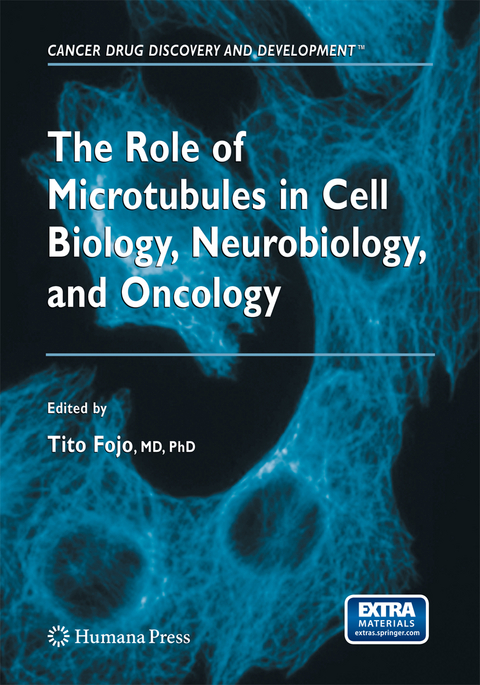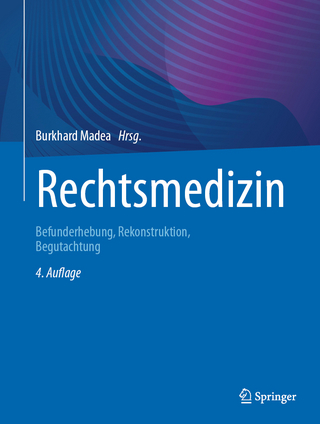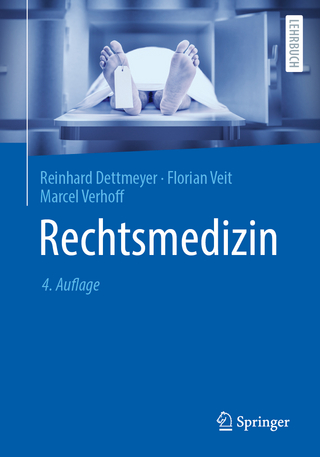
The Role of Microtubules in Cell Biology, Neurobiology, and Oncology
Humana Press Inc. (Verlag)
978-1-62703-861-4 (ISBN)
I want to thank all who contributed to this first edition for their hard work and professionalism, and especially for their patience. I hope the readers will find this volume as helpful as I have found it. There is no doubt that the family of proteins we call the tubulins and the microtubules that they form when they aggregate are extremely important in the cell and, as we are increasingly learning, important in diseases that afflict so many. This field of investi- tion is a testament to how important both basic and clinical sciences are in understanding disease mechanisms and making inroads into therapies. Without the basic science knowledge that has been accumulated, to which the authors of this work have contributed greatly, we would not be in the position we find ourselves of increasingly understanding disease and advancing therapies. As I read the chapters, I was humbled to think of the insights that so many have contributed to this field, and again became aware of how the collaborative effort of so many is needed to understand the complexities of nature. By working together, many have helped to advance this field. Because of their efforts, we find ourselves with the wealth of knowledge contained in this book. This knowledge gives us so much insight even as it challenges us to continue working. Thanks again to all of the wonderful collaborators for their excellence and their patience. Tito Fojo, MD, PhD vii CONTENTS Preface . . . . . . . . . . . . . . . . . . . . . . . . . . . . . . . . . . . . . . . . . . . . . . . . . . . . . . . . . . . . . . . . . . . . . . . . . . . . . . . . . . . . . . . . . . . . . . . . . . . . . . . . . . . . . . . . . . . . . . . . . . vii Contributors. . . . . . . . . . . . . . . . . . . . . . . . . . . . . . . . . . . . . . . . . . . .. . . . . . . . . . . . . . . . . . . . . . . . . . . . . . . . . . . . . . . . . . . . . . . . . . . . . . . . . . . . . . . . . . . . . . . .
An Overview of Compounds That Interact with Tubulin and Their Effects on Microtubule Assembly.- Molecular Mechanisms of Microtubule Acting Cancer Drugs.- Microtubule Dynamics.- Microtubule-Associated Proteins and Microtubule-Interacting Proteins.- The Post-Translational Modifications of Tubulin.- The Isotypes of Tubulin.- The Tubulin Superfamily.- Tubulin Proteomics in Cancer.- Tubulin and Microtubule Structures.- Destabilizing Agents.- Molecular Features of the Interaction of Colchicine and Related Structures with Tubulin.- Antimicrotubule Agents That Bind Covalently to Tubulin.- Microtubule Stabilizing Agents.- Mechanisms of Resistance to Drugs That Interfere with Microtubule Assembly.- Resistance to Microtubule-Targeting Drugs.- Microtubule Stabilizing Agents in Clinical Oncology.- Investigational Anticancer Agents Targeting the Microtubule.- Microtubule Damaging Agents and Apoptosis.- Microtubule Targeting Agents and the Tumor Vasculature.- Neurodegenerative Diseases.- Structure, Function, and Regulation of the Microtubule Associated Protein Tau.
From the reviews:"This book is appropriate for laboratories with an interest in the biology of microtubules … . Each chapter is nicely illustrated, well referenced, and offers a timely evaluation of what is known about tubulin and microtubules, including how they are targeted therapeutically. … The color insert and the accompanying CD-ROM with all color figures are helpful. This is an excellent all-around reference appropriate for researchers or clinicians interested in the basic science of tubulins, microtubules, related diseases, and targeted therapy."(John D. Robertson, Doody’s Review Service, January, 2009)“This book offers a wide and detailed discussion of drugs and methods for studying tubulins and microtubules … . The book is easy-reading and well organized by … well-detailed and itemized methodology of study, a helpful conclusion including tips for future interested investigators, and a long list of references serving a specific source of search. … Chapters added in the end of the book … very nicely wrap up the book for those interested in these areas and hopefully intending to acquire acknowledgement about it.” (Fábio Luís Forti, Brazilian Journal of Pharmaceutical Sciences, Vol. 47 (2), Summer, 2011)
| Reihe/Serie | Cancer Drug Discovery and Development |
|---|---|
| Zusatzinfo | XVII, 587 p. |
| Verlagsort | Totowa, NJ |
| Sprache | englisch |
| Maße | 178 x 254 mm |
| Themenwelt | Medizin / Pharmazie ► Medizinische Fachgebiete ► Onkologie |
| Medizin / Pharmazie ► Medizinische Fachgebiete ► Pharmakologie / Pharmakotherapie | |
| Medizin / Pharmazie ► Pharmazie | |
| Medizin / Pharmazie ► Studium ► 1. Studienabschnitt (Vorklinik) | |
| Studium ► 2. Studienabschnitt (Klinik) ► Rechtsmedizin | |
| Naturwissenschaften ► Biologie ► Biochemie | |
| Naturwissenschaften ► Chemie | |
| ISBN-10 | 1-62703-861-2 / 1627038612 |
| ISBN-13 | 978-1-62703-861-4 / 9781627038614 |
| Zustand | Neuware |
| Haben Sie eine Frage zum Produkt? |
aus dem Bereich


